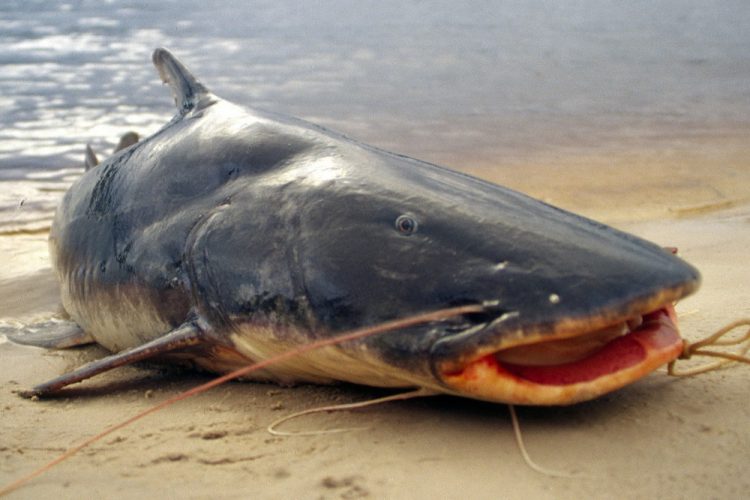Page From the Past: South America’s Piraiba
By Theodore Roosevelt
In his book Through the Brazilian Wilderness, published in 1914, former president Theodore Roosevelt described the massive piraiba catfish of South America. The Tupi-Gurani Indians gave this leviathan its common name, which means “mother of all fish.” That appellation is appropriate, for the piraiba is one of the world’s largest freshwater fish, with weights that can surpass 600 pounds, lengths approaching 12 feet and a girth that can reach almost five feet. Its range includes large rivers in Argentina, Bolivia, Brazil, Colombia, Ecuador, French Guiana, Peru, Suriname and Venezuela.
In this month’s Page From the Past, we share Roosevelt’s discussion about rumors that large piraibas sometimes eat humans.
“It is called piraiba—pronounced in four syllables,” he wrote. “While stationed at the small city of Itacoatiara, on the Amazon, at the mouth of the Madeira, the doctor had seen one of these monsters which had been killed by the two men it had attacked. They were fishing in a canoe when it rose from the bottom … and raising itself half out of the water lunged over the edge of the canoe at them, with open mouth.
“They killed it with their falcóns, as machetes are called in Brazil. It was taken round the city in triumph in an ox-cart; the doctor saw it, and said it was three meters long. He said that swimmers feared it even more than the big cayman, because they could see the latter, whereas the former lay hid at the bottom of the water. Colonel Rondon said that in many villages where he had been on the lower Madeira the people had built stockaded enclosures in the water in which they bathed, not venturing to swim in the open water for fear of the piraiba …”
Brazilians living along backcountry reaches of the Amazon still consider piraibas a menace to unwary swimmers.
“Perhaps they eat people; perhaps not,” one native told me. “Are you brave enough to swim in the river and find out?”



